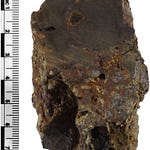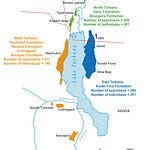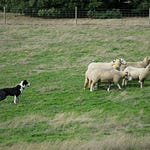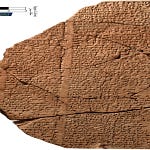A Different Kind of Agricultural Revolution
The usual story goes something like this: climate change, population pressure, dwindling game. Faced with scarcity, ancient foragers had no choice but to settle down and sow crops. Farming, in this version of events, was born of necessity—a last resort that traded freedom for calories.

But in the southern Andes, this narrative doesn’t hold up.
New research1 from the Lake Titicaca Basin suggests a slower, savvier story—one shaped not by hardship but by resilience. Drawing on isotopic, zooarchaeological, and botanical evidence, a team led by Luis Flores-Blanco and colleagues reveals that the shift from foraging to farming in the Altiplano was a process of stability and innovation, not subsistence stress.
"Our research shows that the origin of agriculture in the Titicaca Basin was a resilient process," said Flores-Blanco. "People didn't abandon foraging because it failed. They managed it effectively, then added farming to the mix."
The study, published in PLOS ONE (2025), tracked the diets of individuals buried at the sites of Kaillachuro and Jiskairumoko between 5,500 and 3,000 years ago—a period spanning the onset of plant domestication and sedentism.
Isotopes in the Bone, Plants on the Plate
Using stable carbon and nitrogen isotope analysis, the researchers examined the ratio of plant to animal protein in the diets of 16 individuals. The results were remarkably consistent. Roughly 84% of dietary input came from plant sources across the entire sample, with the remainder from large mammals—most likely domesticated camelids and wild game.
These dietary ratios showed no significant shifts over time. Early foragers and later farmers alike ate in strikingly similar ways, with no evidence of caloric crisis or abrupt subsistence changes.
"The same foods that sustained Archaic foragers continued to support the first farmers," said Flores-Blanco.
The implication is clear: rather than abandoning one mode of subsistence for another, ancient Andean communities layered them. They cultivated wild plants they already knew—quinoa, potatoes, tubers—while continuing to hunt, herd, and trade.
Ceramic Pots and Camelid Herds
What made this gradual transition possible? Cultural technology.
As the researchers note, this period saw major innovations: the appearance of ceramic vessels, expanded trade routes, and new uses of camelids not just as game but as herded animals. These developments weren’t flashy revolutions, but quiet reinforcements of economic resilience.
Ceramics enabled long-term storage and new cooking methods. Trade networks brought unfamiliar plants and tools into local economies. And the shift from hunting to managing camelids created more reliable access to meat, wool, and transport.
"This article challenges the traditional idea that agriculture arose from crisis," said co-author Luisa Hinostroza. "In the Altiplano, we see stability and food sufficiency sustained for thousands of years."
A Landscape of Abundance
The Andes are not easy country. The Titicaca Basin sits at over 3,800 meters above sea level. Frost, drought, and altitude conspire against the unwary. But for ancient residents, these challenges were not barriers—they were familiar parameters.
Through trial, observation, and deep ecological knowledge, Altiplano communities identified the plants and animals that thrived in their environment and invested in their propagation. Rather than over-exploiting resources, they tended them.
The archaeological record at sites like Jiskairumoko supports this. There is continuity in housing structures, burial traditions, and diet that points to social cohesion, not collapse.
"These results constitute crucial evidence revealing the capacity of Andean societies to efficiently manage their resources," Hinostroza added.
Rethinking Origins
The study doesn’t just rewrite the history of agriculture in one part of the world. It contributes to a growing global reevaluation of how farming began.
Across regions, new data are pushing back against older models of agricultural origins rooted in crisis. In coastal East Asia, early cultivation coincided with stable foraging. In parts of North America, maize spread slowly through interwoven economies of foraging and farming.
The story from the Andes reinforces the idea that people didn’t adopt agriculture because they had to. They adopted it because it worked—and because they could.
"This was not a revolution," Flores-Blanco emphasized. "It was an adaptation, built on knowledge, flexibility, and choice."
Additional Related Research
Bruno, M. C. (2014). A paleoethnobotanical perspective on Andean raised field agriculture. Latin American Antiquity, 25(1), 31–58. https://doi.org/10.7183/1045-6635.25.1.31
Moore, K. M. (2011). Camelid economies in the South-Central Andes, 5000–1000 B.P. Journal of Anthropological Archaeology, 30(2), 193–210. https://doi.org/10.1016/j.jaa.2011.01.002
Stanish, C. (2003). Ancient Titicaca: The Evolution of Complex Society in Southern Peru and Northern Bolivia. University of California Press.
Isbell, W. H. (2008). Wari and Tiwanaku: International identities in the central Andean Middle Horizon. Journal of Anthropological Research, 64(2), 151–184.
Flores-Blanco, L., et al. (2025). Altiplano agricultural origins was a process of economic resilience, not hardship: Isotope chemistry, zooarchaeology, and archaeobotany in the Titicaca Basin, 5.5–3.0 ka. PLOS ONE, 20(6), e0325626. https://doi.org/10.1371/journal.pone.0325626
Flores-Blanco, L., Hall, M., Hinostroza, L., Eerkens, J., Aldenderfer, M., & Haas, R. (2025). Altiplano agricultural origins was a process of economic resilience, not hardship: Isotope chemistry, zooarchaeology, and archaeobotany in the Titicaca Basin, 5.5-3.0 ka. PloS One, 20(6), e0325626. https://doi.org/10.1371/journal.pone.0325626









